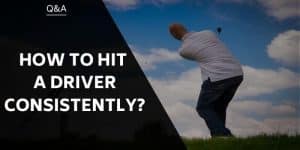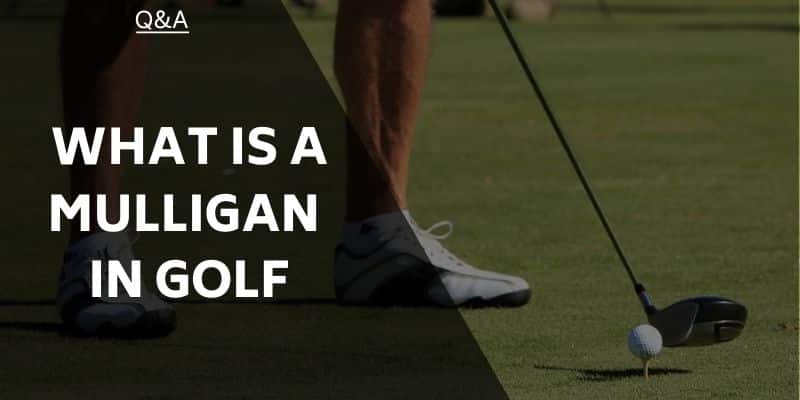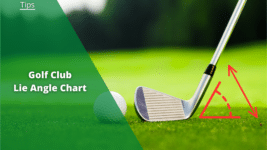The first shot played on a particular hole in any round of golf is played from the tee of that hole. The main challenge of the first shot off the tee is to hit the golf ball as far and as straight as possible.
The best golf club to use to achieve the maximum distance is the “1 club” or driver. For most amateur golfers, especially those with a higher handicap, using a driver can be a daunting and frustrating task.
Common problems are that you tend to try to hit the ball too hard or your stance is incorrect and as a result, you do not execute a smooth swing, meaning that you either tend to hook or slice your ball and end up in a poor position for your second shot.
The secret to a long, straight shot with a driver from the tee is to achieve the correct “driver release”. Exactly what “driver release” means and how to achieve it will be explained in this article.
What Does Driver Release Mean?
“Driver release” is the action of when the driver moves up to the ball in line with the desired path, ensuring that the clubface comes through the ball following this path and that the clubface is squared up to the target line on impact and then completing the swing by continuing to turn and rotate as the clubhead moves past your body and toward the target as the ball is struck.
To achieve the correct driver release to enable you to hit the ball further and, straight along the path intended is reliant on a large number of factors. The following factors can and will affect the quality of ‘driver release” and thus the direction and distance your golf ball travels.
This video will explain driver release.
The Grip
How you grip the golf club is of huge importance. How you position your fingers on the golf club and the pressure you impart has a significant impact on your golf swing. Clubhead speed through the swing produces the power, so your hands are just the guiding force.
The best grip recommended for a driver is the overlap grip because of the union it creates between the two hands and allows for more freedom of movement and hinging of the wrists that can assist in increasing the clubhead speed thus increasing the distance and accuracy you can achieve with the driver.
Another popular grip that is normally used by golfers with smaller hands is the interlocking grip that has been used by great golfers such as Jack Nicklaus or Tiger Woods.
Both grips can be used. It is a matter of preference and what suits your hands and swing.
Here is a video explaining grip options.
Setup
Several steps must be followed before every shot with your driver, to get the right driver set up.
- Place the driver clubhead on the ground allowing you to aim directly at your target This is to align your body to aim slightly to the left of the target.
- While aiming at the target, place your feet together so that the ball is in the middle of your stance.
- Move your left foot slightly to the left to be in line with your left shoulder.
- Move your right foot to be in line with the outside of the right shoulder.
- To ensure that the ball is the correct distance away from you and your stance, place the clubhead just behind the ball.
Take your right hand off the grip and with your left hand, place the club between the butt end of the club and your belt or waistline. If your hand fits snuggly between the two, you have the right distance.
- Your balance must be spread evenly, with the weight displaced evenly between the toes and the heels. Ensure that your back is straight while you are in the swing position.
- Move your left forearm slightly to the left by tucking your right shoulder in. this closes your shoulders throughout the swing. If your shoulders are open it can lead to a bad slice.
- To make sure you’re hands are in the correct position, a useful tip is to imagine that if you let the club go, the club should hit the inside of your left leg if you are right-handed.
Backswing
A good backswing is the first step in executing a strong, smooth flowing, swing of the driver to create power and achieve longer driving distances.
From the correct stance with the ball just ahead of center (an imaginary line from the ball should go straight over your left ear) and shaft leaning slightly forward move the driver slowly straight back and wide with the arms straight.
When the clubhead is at waist height and the right arm is fully extended, continue with the backswing by rotating the upper body (shoulders) and hips to the top of the backswing making sure that your shoulders and hips stay behind the ball.
The left arm and shaft should form a 90-degree angle at chin height. At the top of the backswing, the shoulders should have turned more than 90 degrees.
Downswing
With the downswing, you must allow the body’s rotation to unwind while maintaining the tilt in the upper body as the hips and body rotate through, ensuring you stay behind the ball at the point of impact and the swing goes up into the golf ball.
Ensure that you keep your body shape and that the arms are fully extended while striking through the golf ball. The shaft angle must be almost straight and level to keep the loft high.
A good drill to improve your golf striking and power using Lag (time delayed-release) is the pump drill.
Strike Location
The point of impact on the clubface is highly significant as it will determine the distance, direction, height and, amount of spin imparted on the golf ball.
- Centre of the clubhead – (sweet spot) Perfect place to hit the ball for desired direction and distance required.
- The heel of the clubhead – the curvature causes the ball to go to the right thus fading or slicing. The distance that it can be hit is also reduced.
- The toe of the clubhead – the ball goes to the left and the distance it can be hit is reduced.
- The lower part of the club – the ball has a lower trajectory with increased spin and a reduction in the distance that can be achieved.
- The higher part of the club – the ball has an elevated launch with the spin decreased and distance that it can be hit is reduced.
Follow through and Finish Position
The follow-through and finish position is an integral part of the success of a drive from the tee to achieve the maximum distance and the desired direction required.
As you come down to hit the golf shot, making sure you are behind the ball, continue rotating the hips and stretching the arms out, working the driver around the body as you transfer the weight to the left-hand side allowing it to square the clubface through the shaft ensuring you achieve the desired direction.
Finish the swing with a full body rotation, rotating all the way through while maintaining your balance and facing in the direction of the shot.
Tip to remember
The important factors to examine have been covered in this article. To summarise, the following factors will have to be checked for you to improve your “driver release” and thus your handicap.
- Grip – make sure you have the correct grip and that it is comfortable for you.
- Setup – before teeing off with the driver ensure that all aspects of your setup are correct.
- Backswing – make sure that your driver is moved slowly to the correct backswing position and that your body position is correct.
- Downswing – practice the “pump drill” correctly, regularly and, before each game to improve the power and direction of your backswing.
- Strike location – practice and concentrate on connecting with the center of your wood to get the longest distance and direction from your drive.
- Follow through and Finish position – concentrate on rotating the hips and fully stretching the arms to work the driver fully around the body and finishing with a balanced full body rotation.
Final Thoughts
For a golfer just beginning the game or a golfer with a high handicap, the driver for most will be an important aspect in improving your game. Driver release is an important aspect of improving your ability to use the driver.
To improve your “driver release” will mean examining all the aspects involved and decide which factors you need to work on and, concentrate on improving those factors.
Related Articles
- What Does HT Mean On TaylorMade Drivers?
- How Much Does a Golf Simulator Cost and How Affordable Are They?
- The Best Golf Drivers
- How To Get Better At Golf
Nick is the founder of GolfSpan and an avid golfer. He's not quite a pro but has over 15 years of experience playing and coaching golfers worldwide. His mission is to bring the golfing community a better experience when it comes to choosing the right golf gear and finding the right setup for your game.






